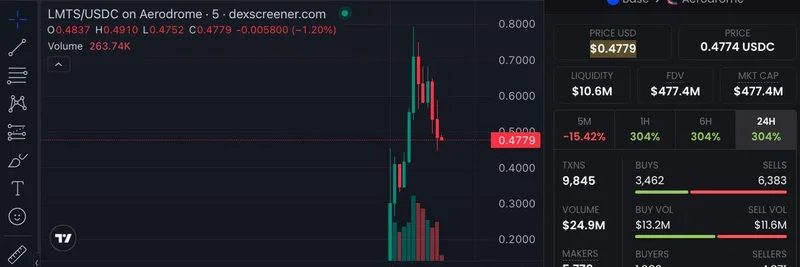In the wild world of crypto, crashes can hit like a freight train, and the recent "Black Friday" meltdown was no exception. If you're scratching your head wondering what the heck happened, you're not alone. A recent episode of the Unchained podcast, hosted by Laura Shin, features Diogenes Casares, founder of Klyra Protocol, breaking it all down. This discussion, highlighted in a tweet by @abraar_69, is a must-listen for anyone trading or investing in crypto, especially those dabbling in meme tokens which got hammered in the chaos.
What Sparked the Inferno?
It all started with a tweet—yes, really. Former President Trump announced 100% tariffs on China in retaliation to their restrictions on rare earth exports. This bombshell dropped right around the US market close on a Friday, catching everyone off guard. Within hours, the crypto market imploded, leading to a staggering $19 billion in liquidations. For context, that's about 10 times worse than the FTX collapse in terms of speed and scale.
Diogenes explains that the markets were already primed for disaster. Leading up to the tweet, there was massive leverage built up, with altcoin open interest rivaling Bitcoin's. Traders were chasing highs on perpetual futures (perps), those leveraged contracts that let you bet big on price moves without owning the asset. When the tariff news hit, it triggered a cascade of forced sales, amplified by automated systems.
The Altcoin Bloodbath and Market Maker Mayhem
Altcoins, including many popular meme tokens, took the hardest hit, plummeting up to 95% in value. Why so extreme? Diogenes points to the thin liquidity in these markets. Most altcoins rely on just a handful of market makers—firms that provide buy and sell orders to keep trading smooth. During the crash, these makers got overwhelmed or outright blew up, leaving order books empty. Prices tanked to near zero for tokens like Adam and Athena, while even Solana dropped 40%.
Smaller market makers, such as Resolve or Cyan, vanished in the liquidity vacuum, exacerbating the drops. This wasn't just spot trading; perpetual order books on exchanges were the epicenter, where leveraged positions got liquidated en masse.
Auto-Deleveraging: The Safety Net That Snapped
To prevent total system failure, exchanges activated auto-deleveraging (ADL), a mechanism that forcibly closes profitable positions to cover losses from the losing side. Think of it like a poker game where the house steps in to balance the pot. Diogenes describes how this kicked in across platforms, but it locked out market makers and caused more panic.
Decentralized exchanges (DEXes) like Hyperliquid handled it better with minimal downtime, while centralized ones (CEXes) like Binance and Bybit saw API shutdowns and freezes. The result? Traders couldn't access their accounts, amplifying the fear.
Hidden Dangers: DATs and Leverage Lurking in the Shadows
One sneaky culprit was Decentralized Autonomous Traders (DATs), which allowed hidden leverage to build up. These automated strategies chased catalysts without real underlying demand, making the whole system fragile. When liquidity dried up, it was like pulling a thread on a sweater—everything unraveled.
The USDe Depeg Debacle
Stablecoins weren't spared either. USDe, a synthetic dollar from Ethena, depegged wildly on Binance, dropping to 62 cents. This happened because exchanges sold USDe collateral to cover USDT positions, creating massive sell pressure. Diogenes praises Ethena for managing it well through frequent rebalancing, but the event sparked cascading liquidations across the board.
Price feeds became unreliable too, with infrastructure failures on chains like Solana causing discrepancies of 10-20% between exchanges. Oracles (data providers) even hardcoded prices to stem the bleeding.
Was It a Coordinated Attack?
Diogenes entertains the idea but leans toward market mania over malice. Simultaneous issues on major exchanges raised eyebrows, but he attributes it to overwhelmed systems and fragmented market share. Still, suspicions linger about insider trading—large short positions appeared on Hyperliquid just before the tweet, suggesting some whales knew what was coming.
Lessons Learned and Storm Clouds Ahead
The crash exposed glaring flaws in crypto's infrastructure. Diogenes calls for better ADL policies, more transparency from exchanges on their internal market makers, and using profits for insurance funds instead of token buybacks. Liquidity providers (LPs) have "extraordinary rights" like priority fills, but they failed to step up during the crisis.
Scarily, he predicts this won't be the last—or worst—crash. With perps growing in popularity and potential US legalization on the horizon, leverage could skyrocket to 100x or more. For traders, especially in volatile meme tokens, the advice is clear: choose exchanges based on uptime, fair ADL, and specialization. And that rumor about Jump Trading losing $1 billion? It's circulating, but unconfirmed.
If you're into meme coins, this episode is a wake-up call. Many memes rely on hype and leverage, making them prime victims in such meltdowns. Head over to the Unchained podcast for the full breakdown, and stay vigilant—crypto's rollercoaster isn't slowing down anytime soon.


